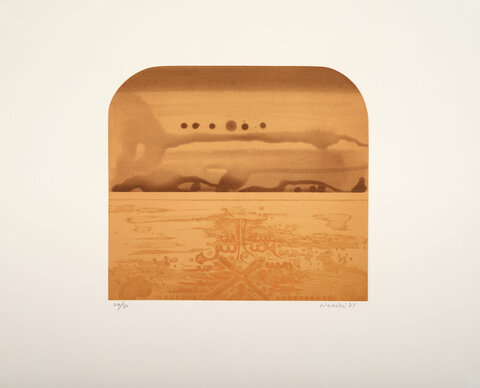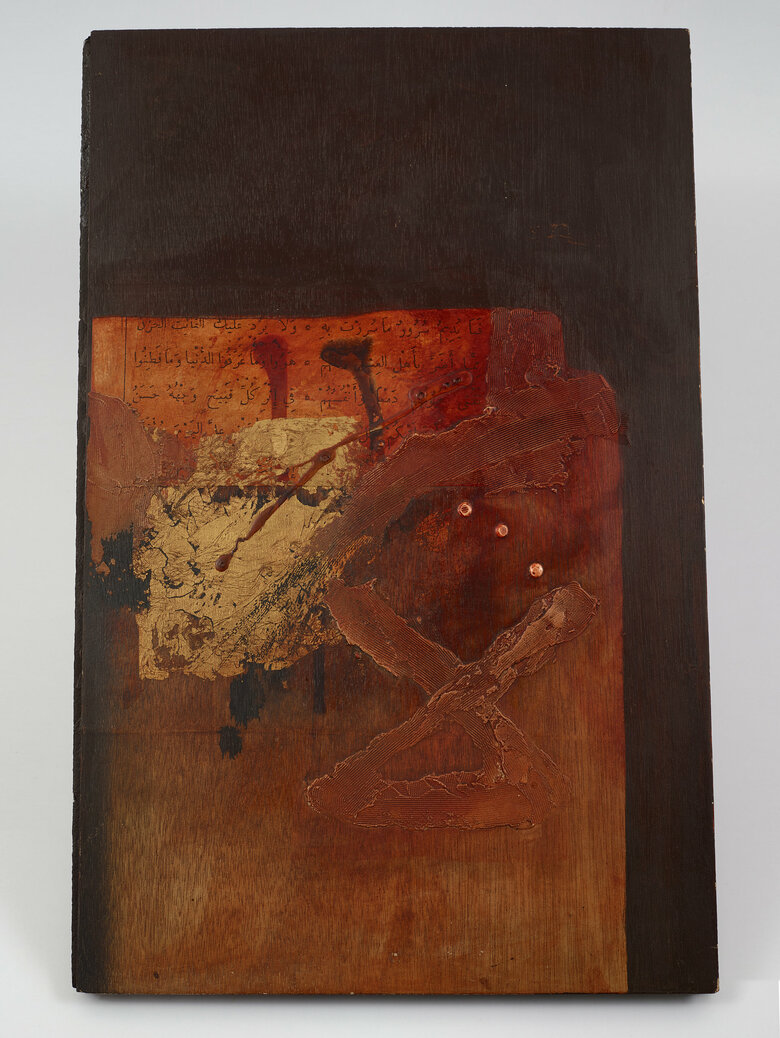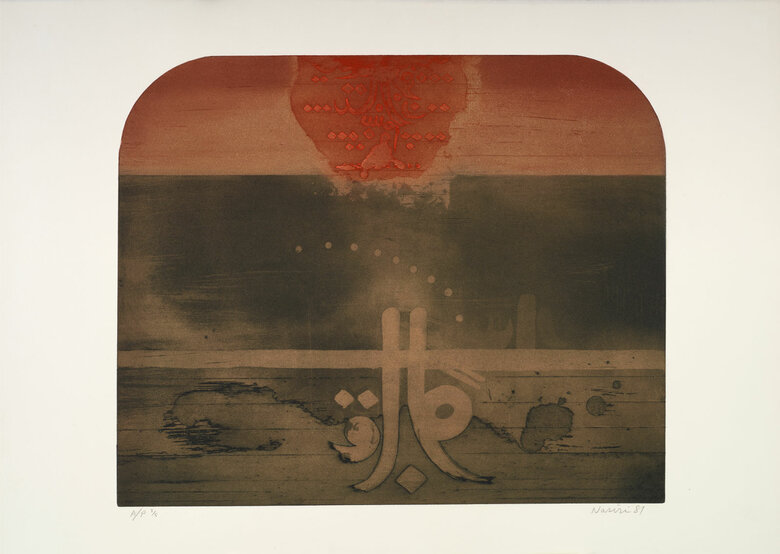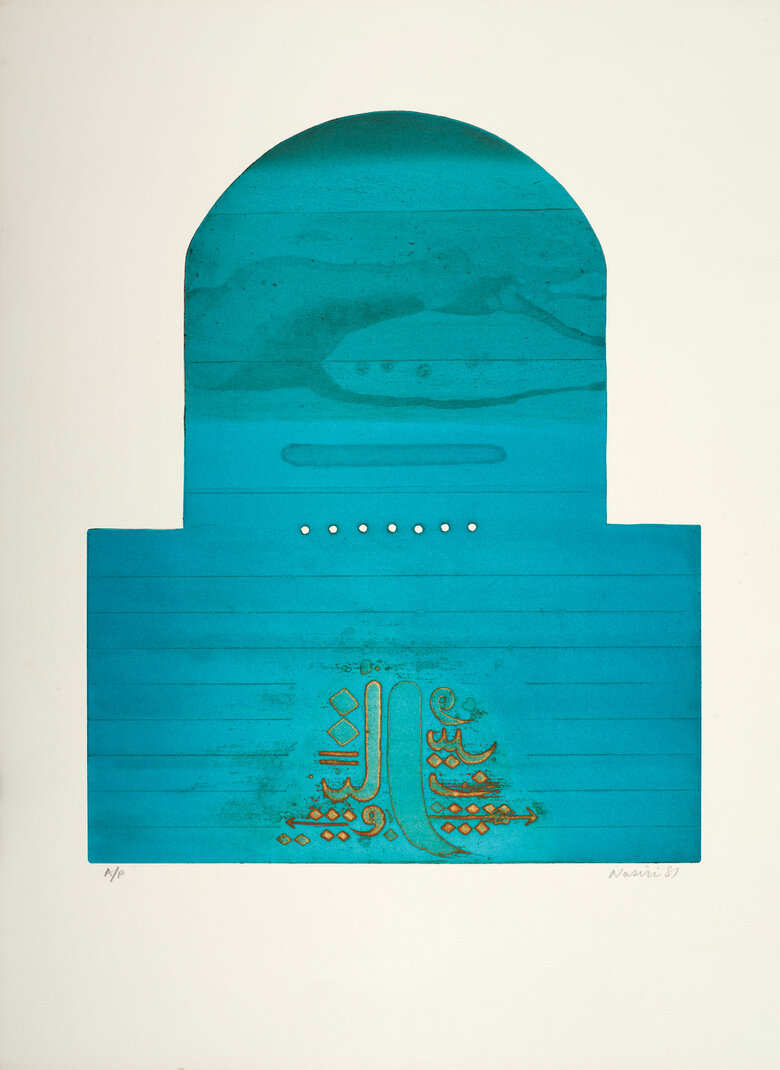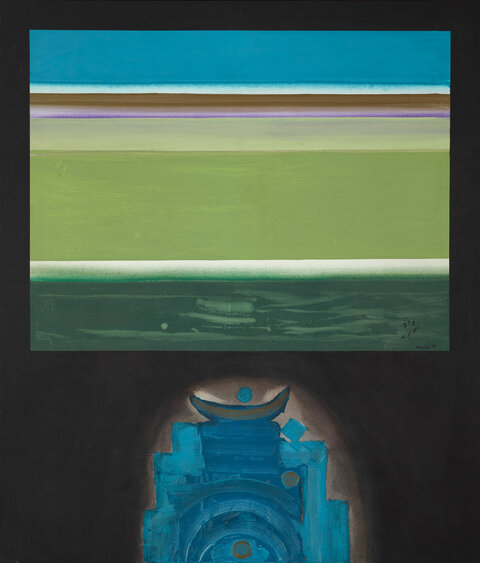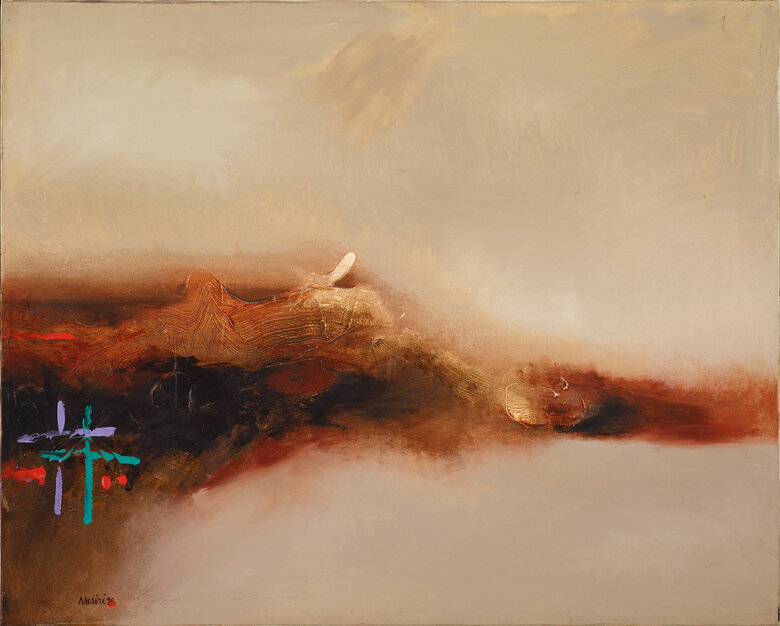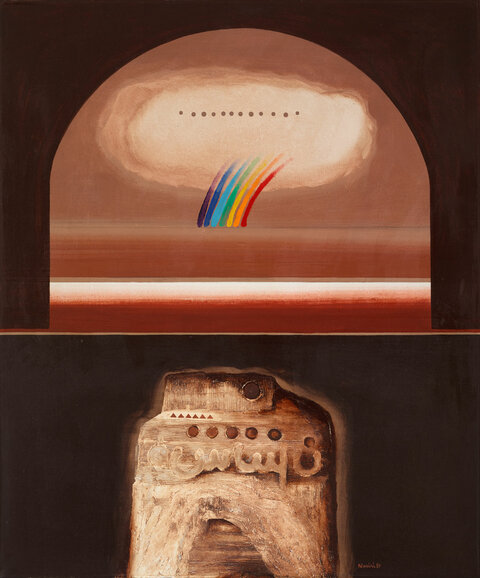This print is part of Rafa Nasiri’s series Variations on the horizon in desert colors. The rounded square frame opens like a window onto a horizon, featuring a composition in gradations of ochre and earthy browns, which overlap and are divided sharply in half by a horizontal line. Here, Nasiri divides the world according to Chinese cosmography into an upper celestial realm filled with movement and mystery and a lower terrestrial realm containing symbols, letters, and stains.
Nasiri’s wife, poet, and art critic May Muzaffar writes that his preference for the abstract stemmed from his hometown in the Iraqi desert city of Tikrit, where "the sky opened endlessly to the earth." In Nasiri's work, the effect of desert light and shadow on the shape and features of objects is evident. Nature became a driving force for Nasiri, as he gained intensive training in printing and painting the natural environment during his studies in China and grew up in a small city surrounded by wilderness and endless plains bathed in light.
In this print, the relationship between heaven and earth is abstracted. Above the horizon line, ethereal, cloud-like forms emerge in viscous brown ink stains over an ochre base. Below, the terrestrial realm creates a landform built from faded smears, scars, signs, dots, spills, scratches, fragments of Arabic script and many nuqat that pile up like rubble. These aspects of fragile materiality represent traces of life and the tangible existence of place. Nasiri photographed peeled posters, wall cracks, street scribblings, and graffiti throughout his life. He also documented the marginal and hardly noticed ways that time and natural processes leave their traces in corrosion, rust, stains, and cracks. Nasiri used these photographs as studies for his prints.
The single letters and signs that emerged in Untitled, 1981, as Muzaffar described, transformed a natural scene into a "sign or affect that suggests its reference without describing or diagnosing it," making the work familiar to receive but mysterious to decipher. Nasiri writes that he approaches the Arabic letter "in an abstraction that verged on the spirit of a Bedouin who sees what an urban dweller fails to see or conceive in the desert. My work comprises small details and simple symbols which, through its diverse relationships and blending, constitute a world at once both familiar and incongruous to whoever ponders, contemplatively and deeply over universe and nature".
Signed and dated in English lower right front with edition front lower left


